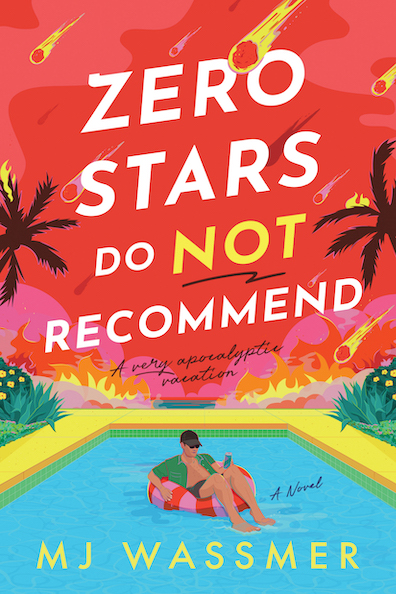Forsaking All Others
With Hide, Matthew Griffin has written a love story for the ages
Reading Hide by Matthew Griffin, I found myself thinking about the great love stories—Anna Karenina, Wuthering Heights, Doctor Zhivago—but I wondered too about those left untold. How many love stories were never written for fear of social or even legal repercussions? Maurice by E.M. Forster comes to mind. It was nearly one of those silenced stories. A tale of same-sex love in early twentieth-century England, inspired by the relationship between Forster’s close friends, the poet Edward Carpenter and his partner George Merrill, Maurice was published posthumously in 1971. The release of such a novel during the author’s lifetime could have meant the end of his career. But E.M. Forster helped pave the way for a voice, and a book, like Matthew Griffin’s.
 Hide tells the story of Wendell, a taxidermist, and Frank, a factory worker. They meet at the end of World War II, when Frank returns to North Carolina. Like Forster’s Maurice, Hide is set at a dangerous time and in a dangerous place for two men to fall in love. Wendell describes life in a small Southern town where gays are arrested for “crimes against nature,” in an era when their names, addresses, and photographs are printed in the local newspaper: “At best, they were fired from their jobs, evicted from their homes, and abandoned by their friends and families. At worst, they were sentenced to prison, or sent to the sanitarium, where they might have electrodes taped all over their bodies, clustered like sores on their privates, to deliver a painful Pavlovian shock every time the image of a naked man was projected on the cinderblock wall, or die from hypothermia in a dark basement after having buckets of ice water thrown on them as part of an experimental and exciting new therapy, or simply be strapped to a table and castrated.”
Hide tells the story of Wendell, a taxidermist, and Frank, a factory worker. They meet at the end of World War II, when Frank returns to North Carolina. Like Forster’s Maurice, Hide is set at a dangerous time and in a dangerous place for two men to fall in love. Wendell describes life in a small Southern town where gays are arrested for “crimes against nature,” in an era when their names, addresses, and photographs are printed in the local newspaper: “At best, they were fired from their jobs, evicted from their homes, and abandoned by their friends and families. At worst, they were sentenced to prison, or sent to the sanitarium, where they might have electrodes taped all over their bodies, clustered like sores on their privates, to deliver a painful Pavlovian shock every time the image of a naked man was projected on the cinderblock wall, or die from hypothermia in a dark basement after having buckets of ice water thrown on them as part of an experimental and exciting new therapy, or simply be strapped to a table and castrated.”
It takes immense courage for Wendell and Frank, in such a fraught atmosphere, to come out as gay even to each other. It takes bravery to reveal to each other their rawest and deepest selves. The process is perhaps best illustrated by one of the novel’s most powerful scenes, when Wendell gives Frank a lesson in skinning a deer, guiding his lover’s hand into the cut flesh, turning the animal’s hide inside out to expose the blood, bone, and sinew. Wendell calls the post-war world he and Frank inhabit “a bright, strange place … where none of us belonged.” But it’s easier to live as outsiders in their bright, strange world together. For decades, from the moment they first embrace, all they have is each other, until at eighty-three Wendell begins losing Frank to the ravages of age.
 Matthew Griffin’s debut novel comes to us at a pivot point in our national history. Times have changed in America. Our country is beginning to acknowledge, incrementally, the civil rights of gay men and women. While the battle for full equality hasn’t yet been won, victory is much closer now than it was in Forster’s time. Books like Hide continue the conversation Maurice began, a hopeful plea delivered through fiction that same-sex couples might grow old peacefully together, enjoying the same freedoms as their straight counterparts.
Matthew Griffin’s debut novel comes to us at a pivot point in our national history. Times have changed in America. Our country is beginning to acknowledge, incrementally, the civil rights of gay men and women. While the battle for full equality hasn’t yet been won, victory is much closer now than it was in Forster’s time. Books like Hide continue the conversation Maurice began, a hopeful plea delivered through fiction that same-sex couples might grow old peacefully together, enjoying the same freedoms as their straight counterparts.
But Hide can’t be reduced to a social-justice tale, or one of love between gay men. It’s a story about the kind of love, gay or straight, that endures beyond youth, strength, and memory. It’s about the preciousness of the lives couples build together and the heartbreak of losing them. Wendell and Frank have withdrawn from society, given up their friends and families, forsaking all others to hide away for decades in their secluded cabin. When Frank has a stroke that renders him unable to care for himself, Wendell is faced with a final act of sacrifice that may prove too great in his last years.
Once again, E.M. Forster comes to mind. His final comment on Maurice, in a note attached to the manuscript hidden away in a drawer, was this: “Publishable. But worth it?” Wendell finds himself asking a similar question at the end of his time with Frank. It’s a question we all ask ourselves. How much are we willing to give up for the ones we love?

Novelist Amy Greene is the New York Times-bestselling author of Bloodroot and Long Man. Her third novel, The Nature of Fire, is forthcoming from Knopf. Greene lives with her family in the Tennessee foothills of the Smoky Mountains.


